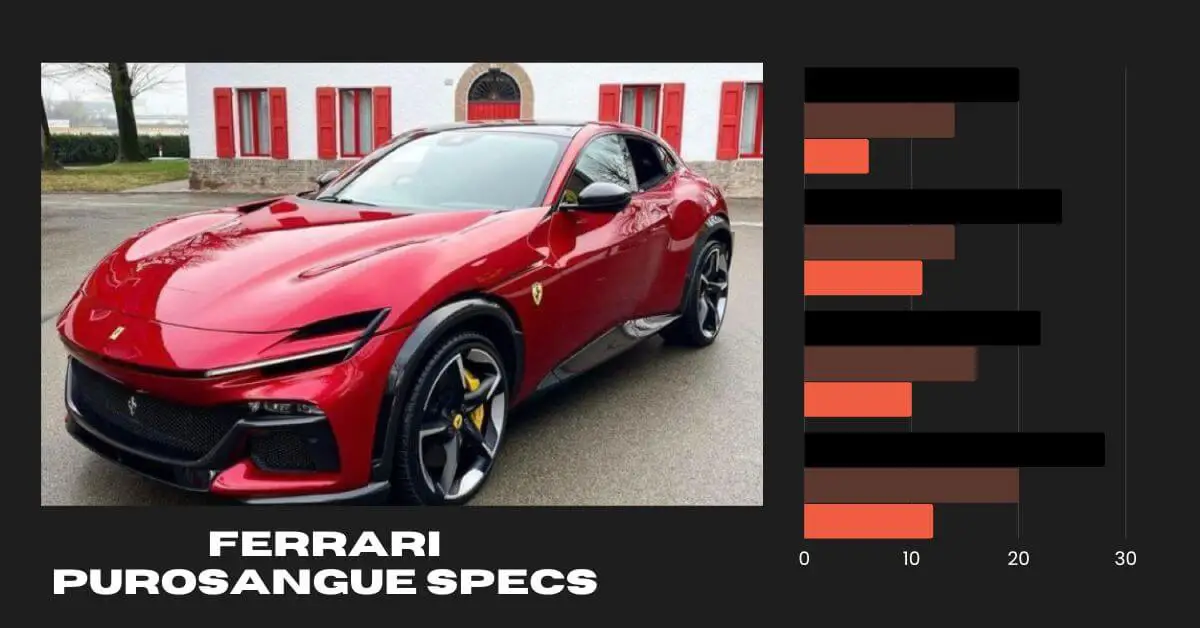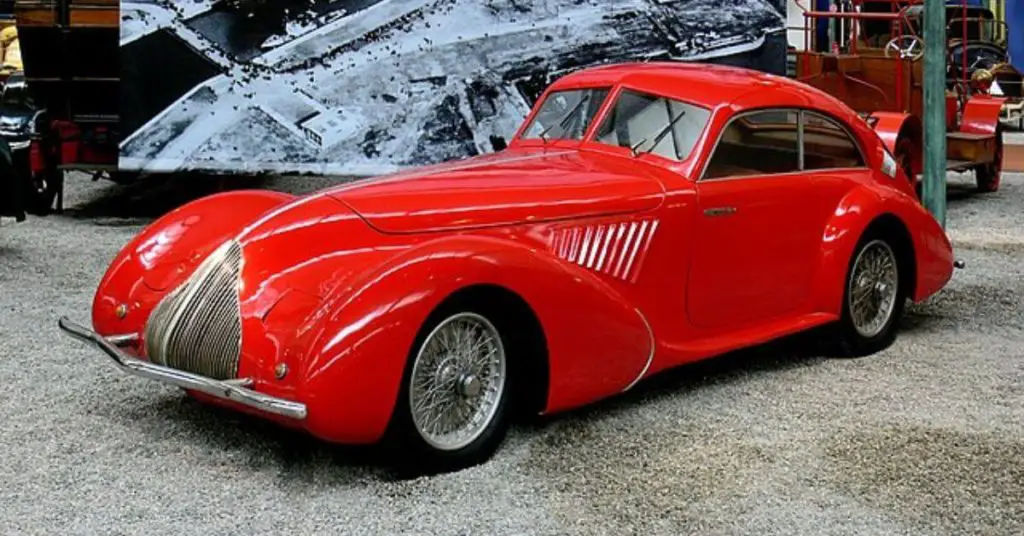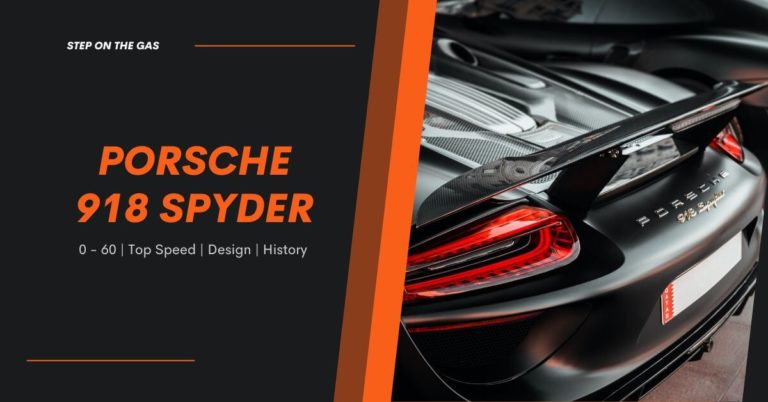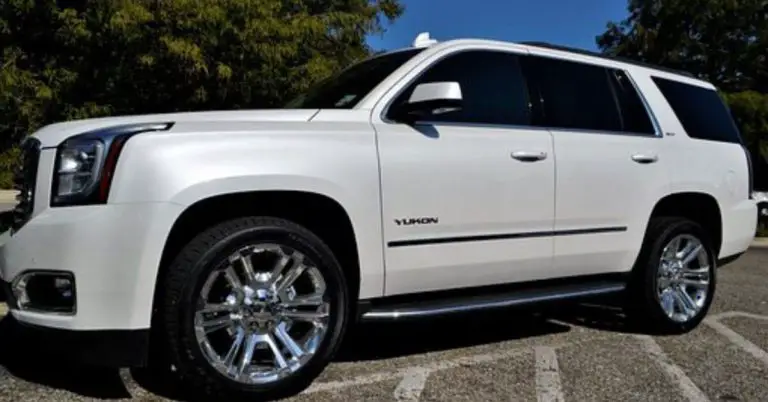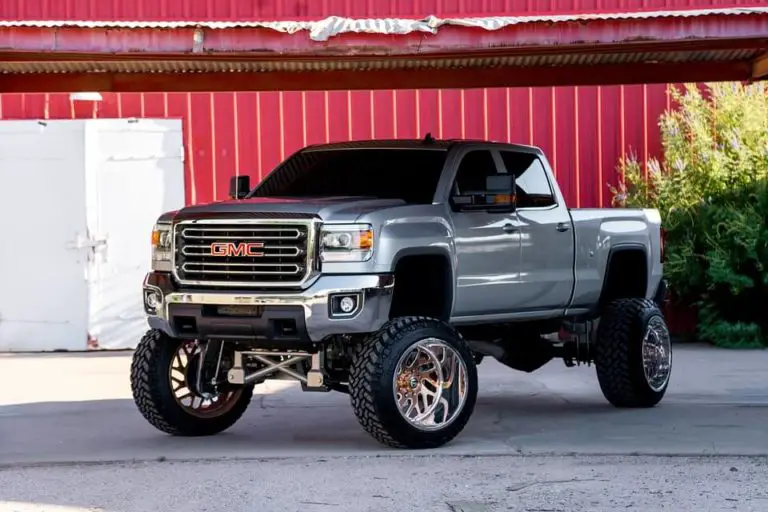Ferrari Purosangue Specs | Revealing Performance
What if I told you you could drive a Ferrari with four doors, four seats, a spacious trunk, and handle any terrain or condition? Sounds too good to be true.
Well, it’s not. Meet Ferrari Purosangue, the first SUV from the prancing horse.
The Ferrari Purosangue specs are astonishing; it’s a game changer in performance vehicles, combining the power of a V12 naturally-aspirated engine with practicality and a raised driving height.
Join me as we explore the thrilling world of the Ferrari Purosangue and discover why this remarkable vehicle has left such an interest and indelible mark on the automotive landscape.
Table of Contents
From Racing Origins to the Purosangue SUV
Founding and Early Years of Ferrari
The story of Ferrari begins with one man: Enzo Ferrari. Born in 1898 in Modena, Italy, Enzo has been fascinated by cars and racing since childhood.
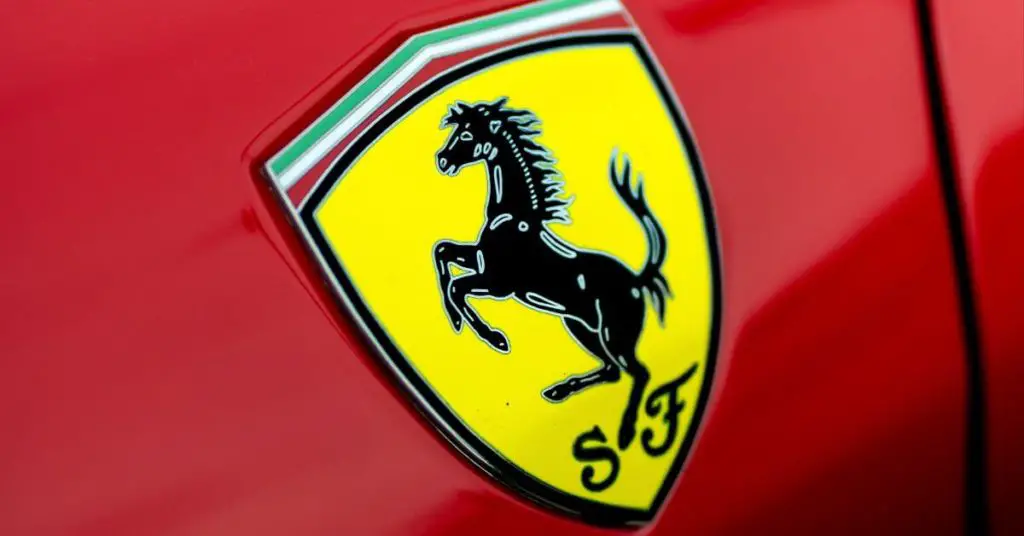
He started his career as a test driver and mechanic for Alfa Romeo in 1919 and soon became a successful racer.
He won several races and championships in Italy and Europe, earning fame and respect among his peers.
However, Enzo had bigger ambitions than just being a driver. He wanted to create his racing team and his cars. 1929 he founded Scuderia Ferrari (Ferrari Stable) as an Alfa Romeo racing division.
He recruited talented drivers, engineers, and mechanics to compete under his leadership. He also developed close relationships with wealthy patrons who financed his projects.
Related Article: McLaren SUV: Luxurious And Powerful Meets Practicality
Scuderia Ferrari quickly became one of the most dominant forces in motorsport, winning numerous races and titles in various categories, such as Formula 1, sports car racing, and endurance racing.
Some of its iconic models include the Alfa Romeo 8C 2300 Spider Corsa (1932), the Alfa Romeo Tipo B P3 (1934), and the Alfa Romeo 158 Alfetta (1938).
Some of its legendary drivers include Tazio Nuvolari, Luigi Fagioli, and Juan Manuel Fangio.
Enzo also established his distinctive style, logo, and reputation in racing. He chose red as his signature color, representing speed, power, and passion.
He adopted the prancing horse as his emblem, inspired by an Italian fighter pilot who painted it on his plane during World War I.
He earned nicknames such as “il Commendatore” (the Commander) or “il Drake” (the Dragon) for his charisma, authority, and temper.
But Enzo wanted more than just an Alfa Romeo partner. He wanted more independence and control over his designs and decisions.
Related Article: SUV Tents For Camping | Transform Your SUV Into A Luxury Campsite!
He also wanted to expand his production to include road cars for customers who wanted to experience his performance and prestige.
In 1939, he left Alfa Romeo and founded Auto Avio Costruzioni, initially making airplane and car parts. In 1947, he officially launched Ferrari S.p.A., a company that would produce racing and road cars under his name.
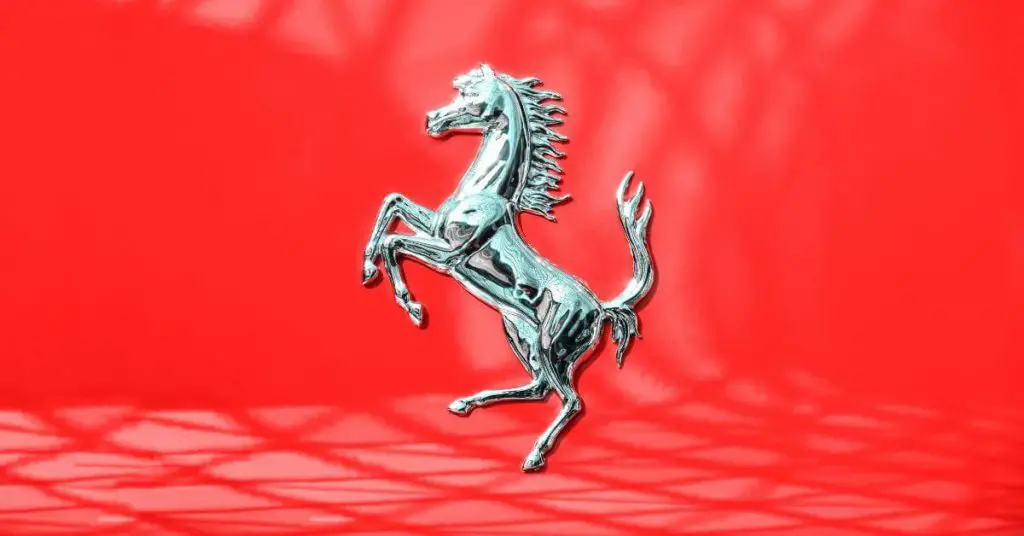
Ferrari’s road cars were not mere replicas of its racing cars. They were unique creations that combined beauty, innovation, and excellence.
They featured advanced technologies like V-12 engines, dual-clutch transmissions, and active suspensions. They also had elegant designs like Pininfarina’s curvy shapes or Scaglietti’s sleek lines.
Some of its landmark models include the 166 Inter (1948), the 250 GT California Spyder (1957), the 365 GTB/4 Daytona (1968), and the F40 (1987).
Ferrari’s road car business maintained its racing activities. On the contrary, it complemented them by providing funds, feedback, and prestige.
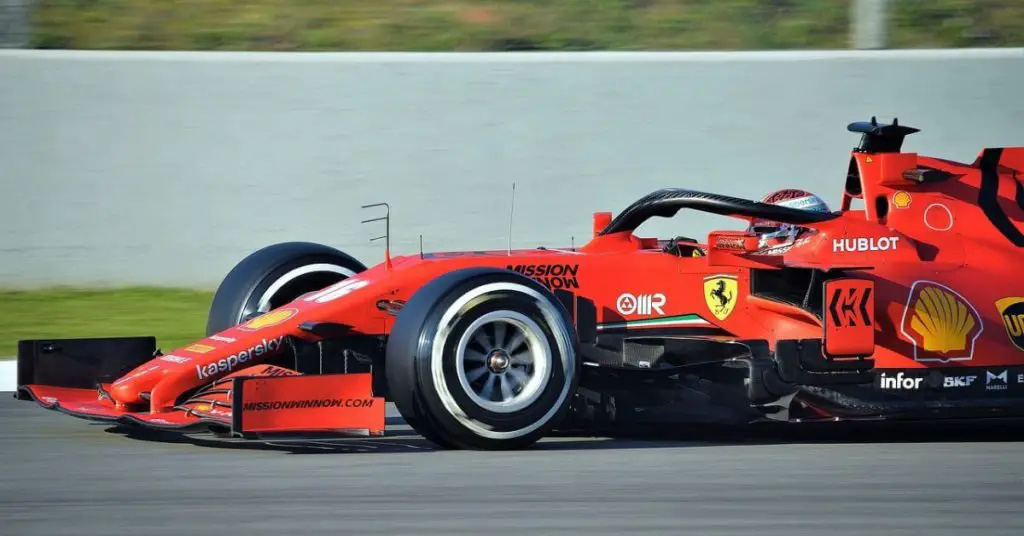
Ferrari continued to dominate motorsport, winning more Formula 1 championships than any other constructor and countless victories in different categories. It also faced fierce rivalries with manufacturers such as Maserati, Jaguar, Ford, and Porsche.
Evolution of Ferrari’s Vehicle Lineup
Ferrari is not a one-trick pony. Although famous for its high-performance sports cars, it has diversified its vehicle lineup to meet customer needs and market demands.
From grand tourers to supercars, from hypercars to SUVs, Ferrari has always offered a variety of models that cater to different tastes and preferences.
Ferrari’s vehicle lineup can be divided into four main categories or segments: sports cars, grand tourers, supercars, and hypercars. Sports cars are the core of Ferrari’s production, representing its racing heritage and expertise.
They are typically two-seater or two-plus-two models with a mid-engine layout, rear-wheel drive, and a V-shaped engine (usually a V-8 or a V-12).
Some examples of Ferrari’s sports cars include the 488 GTB, the F8 Tributo, and the Roma.
Grand tourers are more luxurious and comfortable than sports cars, designed for long-distance driving and cruising.
They usually have a front-engine layout, rear-wheel or four-wheel drive, and a V-shaped engine (usually a V-12).
Some examples of Ferrari’s grand tourers include the 812 Superfast, the GTC4Lusso, and the Portofino.
Supercars are more extreme and exclusive than sports cars, offering higher performance levels, technology, and design.
They usually have a mid-engine layout, rear-wheel or four-wheel drive, and a V-shaped engine (usually a V-8 or a V-12) with a hybrid system or electric motor.
Some examples of Ferrari’s supercars include the 458 Speciale, the 488 Pista, and the SF90 Stradale.
Hypercars are more advanced and innovative than supercars, representing Ferrari’s vision for the future of automotive engineering and excellence.
They usually have a mid-engine layout, four-wheel drive, and a V-shaped engine (usually a V-12) with a complex hybrid system or electric motor.
Some examples of Ferrari’s hypercars include the LaFerrari, the FXX K Evo, and the upcoming Project 1708.
Get 18 Scale Ferrari Model Now!
Ferrari has maintained its identity and quality across its vehicle lineup by applying its racing heritage and expertise to each model.
It has also innovated and experimented with new technologies and designs in its vehicle lineup to stay ahead of its competitors and challenges.
For instance, it introduced hybrid systems in its supercars and hypercars to boost performance and efficiency, such as in the LaFerrari or the SF90 Stradale.
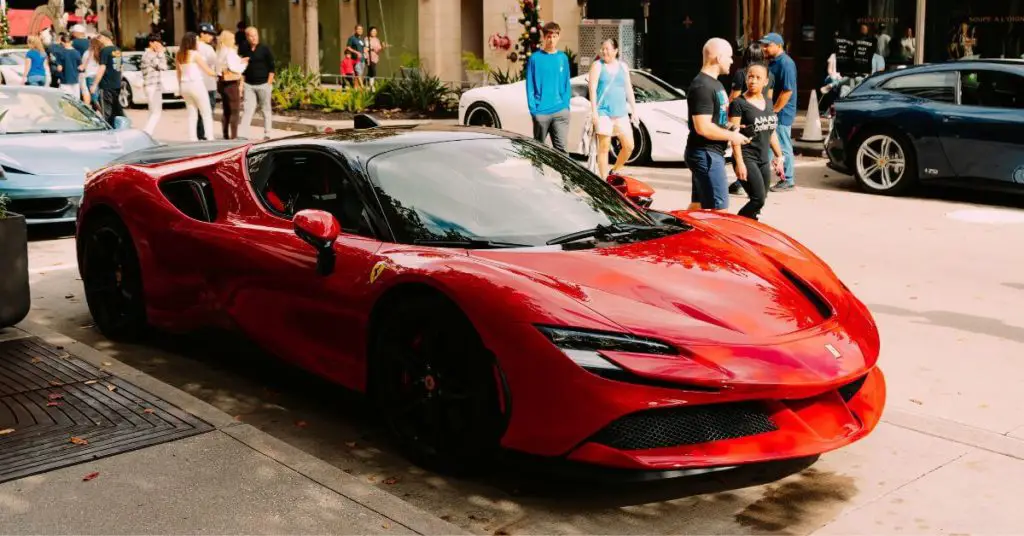
It also experimented with electric motors in some models, such as in the 599 HY-KERS concept car.
It also adopted four-wheel drive in some models, such as the FF, the GTC4Lusso, or the Purosangue SUV.
It also explored different body styles in some models, such as shooting brakes in the FF, the GTC4Lusso, or convertible in the Portofino, the F8 Spider.
Concept Development of the Ferrari Purosangue
Ferrari is not a follower. It is a leader, a pioneer, a visionary. When it decided to create its first SUV model, it did not simply copy or imitate what others had done before. It made something new, something different, something unique.
The Ferrari Purosangue is not just another SUV. It is a Ferrari SUV.
But how did Ferrari come up with this idea? And how did it turn into reality?
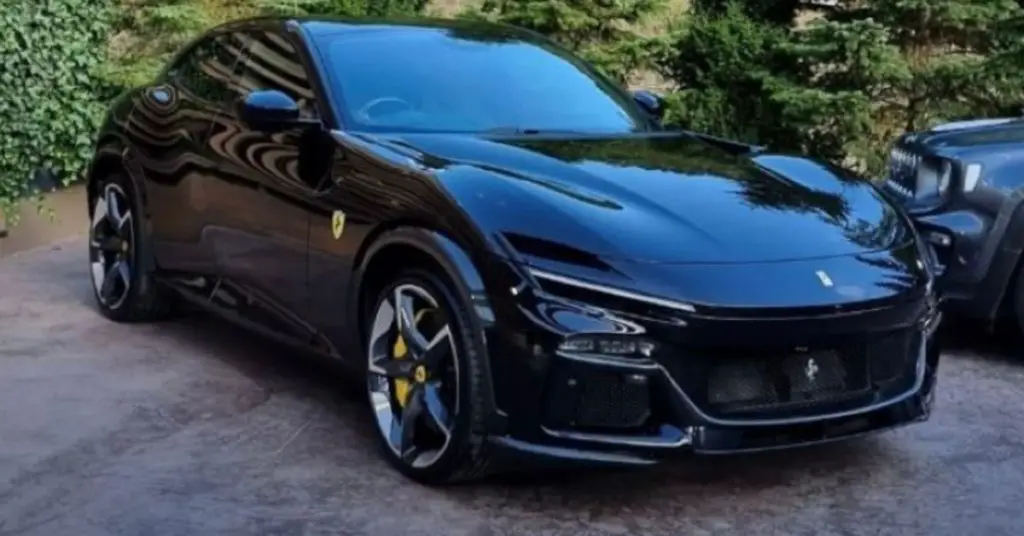
The decision to create an SUV model took work for Ferrari. For decades, Ferrari had resisted making an SUV, arguing that it would dilute its brand identity and betray its core values.
However, in recent years, Ferrari realized it needed to recognize SUVs’ global popularity and profitability, especially among luxury and performance brands.
Porsche, Lamborghini, Bentley, and Rolls-Royce had all launched successful SUV models that had boosted their sales and profits.
Even McLaren wants a piece of the market with their upcoming SUV.
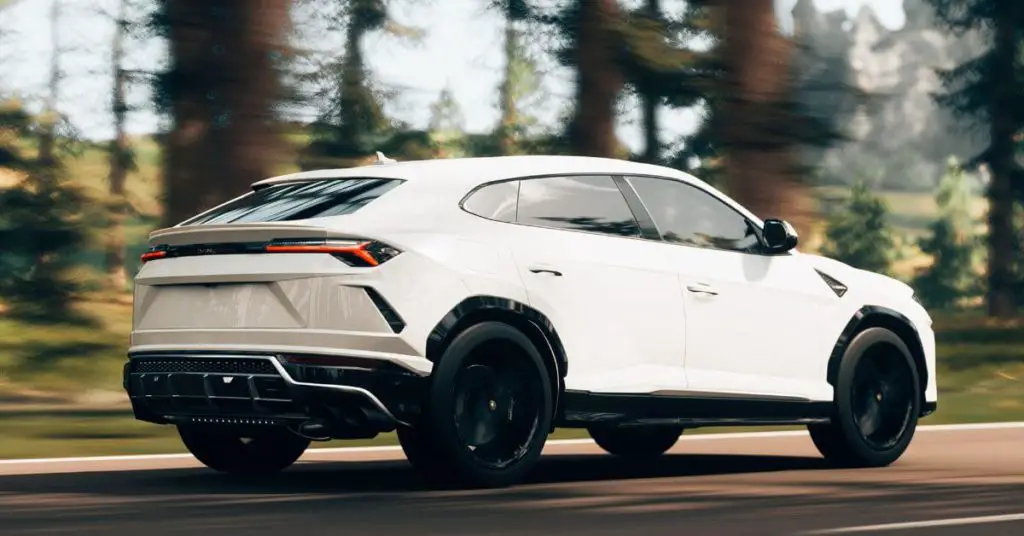
Ferrari also realized a demand for an SUV model among its existing and potential customers who wanted more versatility and practicality from their vehicles without compromising performance and elegance.
Many customers also liked more than one Ferrari in their garage for different occasions or purposes.
Therefore 2016, Ferrari announced that it would develop its first SUV model as part of its new product strategy called Icona (Icon).
The project was codenamed F16X or FX16 internally. The goal was to create a vehicle that would combine the best of both worlds: the practicality and versatility of an SUV with the performance and elegance of a sports car.
A vehicle that would appeal to both loyal customers and new ones who seek a different kind of driving experience.
To achieve this goal, Ferrari approached the concept development of the Purosangue with its vision and philosophy.

It did not want to make just one single car or another SUV. It tried to make a Ferrari SUV.
A vehicle that would maintain its identity and quality, redefine the SUV category, offer a unique driving experience, and create a versatile and adaptable vehicle.
Some of the fundamental principles or objectives that guided Ferrari’s concept development were:
- Maintaining its identity and quality: The Ferrari Purosangue had to be recognizable as a Ferrari by its design, sound, performance, and emotion. It had to reflect Ferrari’s signature performance, racing heritage, and expertise. It had to meet or exceed Ferrari’s standards of excellence in engineering, craftsmanship, and innovation.
- Redefining the SUV category: The Ferrari Purosangue had to challenge the conventional notions of what an SUV can be or do. It had to offer higher performance levels, technology, and design than any other SUV today. It had to set new benchmarks for top speed and power, handling, efficiency, comfort, safety, luxury, and style.
- Offering a unique driving experience: The Ferrari Purosangue had to provide drivers and passengers with a thrilling and enjoyable experience. It had to adapt to different terrains and conditions, such as roads, tracks, snow, or off-road. It had to deliver dynamic and responsive behavior that matched the driver’s preferences or needs. It had to offer various driving modes and settings to adjust its performance, characteristics, or features.
To realize these principles or objectives, Ferrari involved different teams and departments in the concept development of the Purosangue.
The Ferrari Styling Centre (Centro Stile) is a department within Ferrari that is responsible for designing the exterior and interior of Ferrari cars.
Related Article: Most Expensive Aston Martin | From 007 to the Wealthiest
Some of the recent models that the Ferrari created at Centro Stile are the Roma, SF90 Stradale, F8 Tributo, Monza SP1/SP2, Portofino, 812 Superfast, GTC4Lusso, LaFerrari Aperta, F12tdf, 488 GTB/Spider/GTE/GT3/Pista/Piloti/Challenge/Evo/J50/SF90 Spider/Pista Spider/Spider Evo/Challenge Evo.
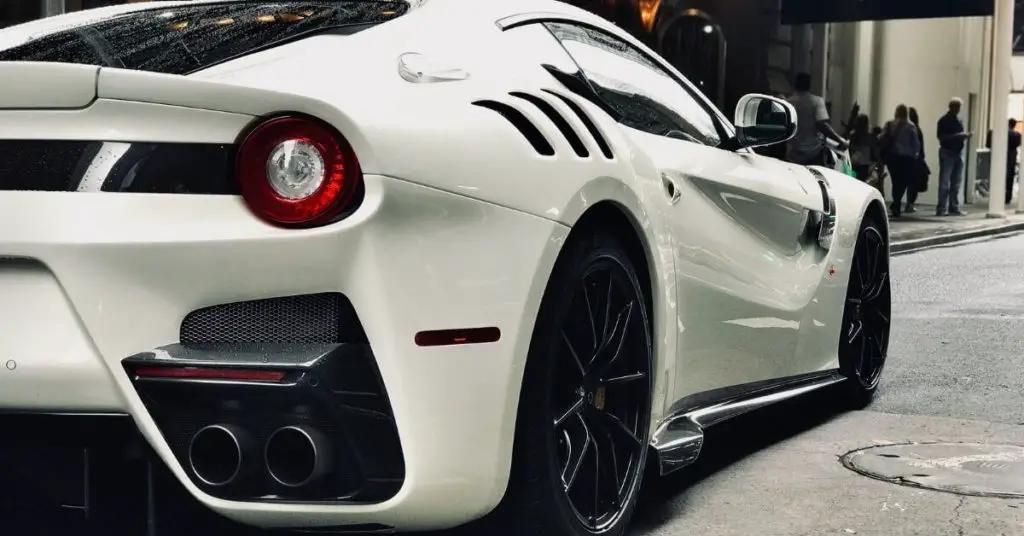
Ferrari’s Decision to Enter the SUV Market
For decades, Ferrari resisted making an SUV, arguing that it would dilute its brand identity and betray its core values.
Ferrari’s former chairman Sergio Marchionne famously said in 2016 that “you have to shoot me first” before he would approve an SUV project.
So what changed? Why did Ferrari decide to enter the SUV market in 2022?
The answer is simple: demand. SUVs’ global popularity and profitability have skyrocketed recently, especially among luxury and performance brands.
Porsche, Lamborghini, Bentley, and Rolls-Royce have all launched successful SUV models that have boosted their sales and profits. Ferrari could not afford to ignore this trend any longer.

Ferrari also realized a demand for an SUV model among its existing and potential customers who wanted more versatility and practicality from their vehicles without sacrificing performance and elegance.
Many customers also liked more than one Ferrari in their garage for different occasions or purposes.
Therefore 2016, Ferrari announced that it would develop its first SUV model as part of its new product strategy called Icona (Icon).
The goal was to create a vehicle that would combine the best of both worlds: the practicality and versatility of an SUV with the performance and elegance of a sports car.
A vehicle that would appeal to both loyal customers and new ones who seek a different kind of driving experience.
Ferrari did not make this decision lightly or hastily. Researching, planning, and executing its entry into the SUV market took time.
It also communicated its vision and philosophy for its first SUV model to its stakeholders, partners, and customers.
With the success of competitors like the Lamborghini Urus and the Bentley Bentayga, it became clear that there was a significant market for high-performance luxury SUVs.
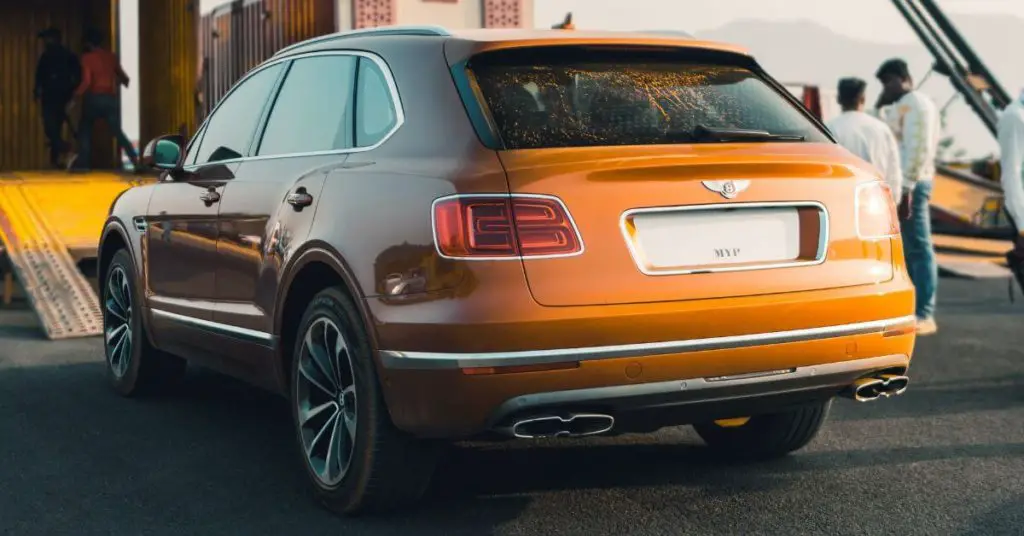
Ferrari recognized the opportunity to expand its customer base by offering a vehicle that combined the performance and prestige of the brand with the practicality and versatility of an SUV.
Secondly, entering the SUV market allowed Ferrari to showcase its adaptability and commitment to innovation. By creating a vehicle that pushed the boundaries of what an SUV could be,
Ferrari demonstrated its ability to evolve and respond to changing market demands while remaining true to its core values.
The decision to enter the SUV market came with risks, as it could have potentially diluted the brand’s image and alienated purists.
However, the Purosangue’s exceptional performance, design, and technology have silenced critics and cemented its position as a worthy addition to the Ferrari lineup.
If you’re interested in exploring more options, particularly focusing on a quieter ride, check out our best picks for the quietest midsize SUVs.
The Purosangue’s Unique Four-Door Design
We are experiencing the culmination of Ferrari’s rich history in the form of its groundbreaking four-door luxury SUV.
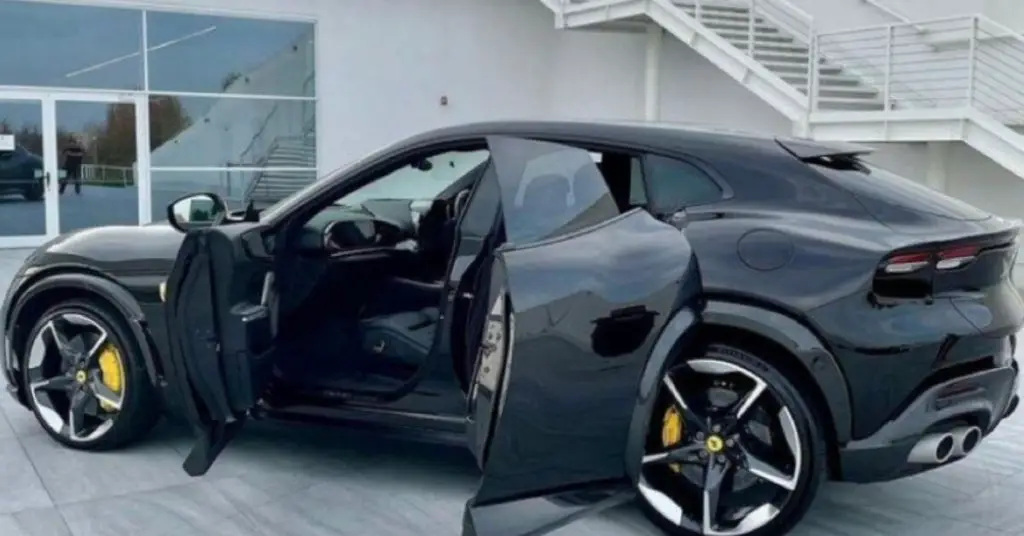
History of Two Rear Seat Models in Ferrari’s Lineup
Ferrari has historically been synonymous with high-performance sports cars, with a focus on two-seater configurations.
However, the company has occasionally ventured into the realm of rear-seat models.
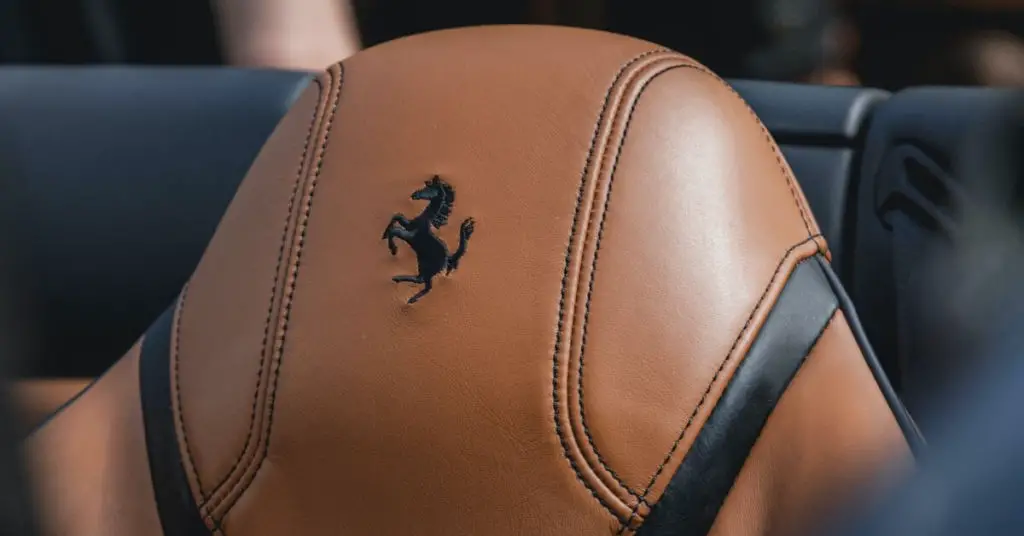
The Ferrari 250 GT 2+2, introduced in 1960, was the first Ferrari to feature four seats, and it was followed by other iconic models, such as the 330 GT 2+2 and the 365 GT 2+2.
These vehicles showcased Ferrari’s willingness to experiment with seating configurations while maintaining the brand’s core values of performance and luxury.
As the automotive landscape evolved, Ferrari continued to develop rear-seat models that catered to the needs of a growing customer base seeking practicality without sacrificing performance.
Models like the Ferrari FF, 612 Scaglietti, and the GTC4Lusso demonstrated the brand’s commitment to innovation and adaptation, pushing the boundaries of what a Ferrari could be.
Design and Exterior Features
The Ferrari Purosangue’s breathtaking design and exterior features showcase the perfect marriage between form and function[1].
Its sleek lines, aggressive stance, and distinctive Ferrari design elements create a modern and timeless aesthetic [1].
The Purosangue’s distinctive silhouette is undeniably Ferrari, featuring the brand’s iconic flowing lines and aerodynamic curves.
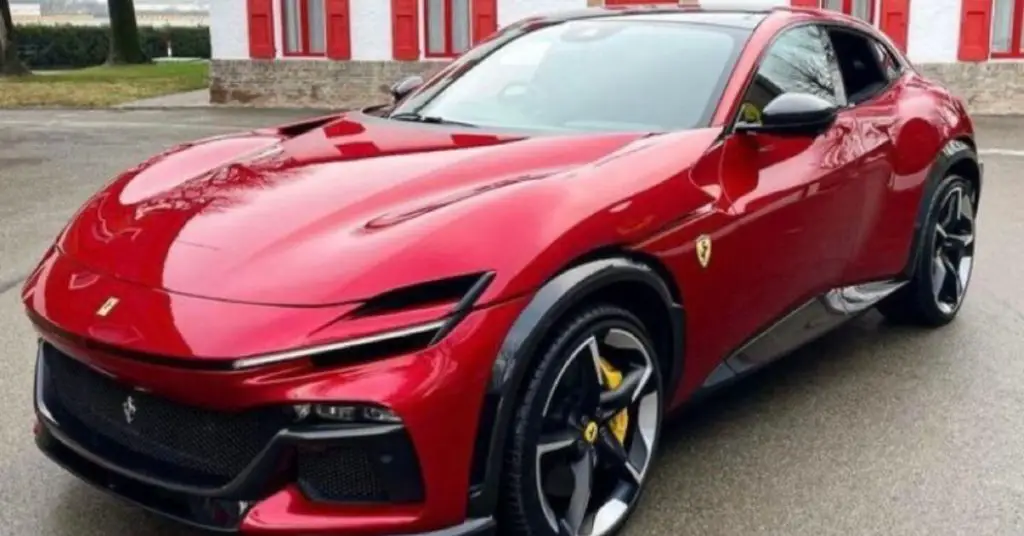
Moreover, the raised driving height and innovative four-door design cater to today’s discerning driver’s practical needs without compromising style.
From its unique LED lighting to the innovative air intakes and diffusers, large alloy wheels and carbon fiber accents enhance the vehicle’s aesthetics and performance capabilities.
The coolest feature – in my opinion, is the glass roof. This optional feature replaces the standard carbon fiber roof with an electro-chromatic glass roof that can change its tint using electric current.
It provides a panoramic sky view, allowing more light into the cabin.
Interior and Comfort
Although the “Sport” in SUV implies sportiness, these large, hefty vehicles typically aren’t as athletic as one might expect.
When they exhibit sporty characteristics, it’s often through aggressive styling, carbon fiber accents, and a lively exhaust.
The Ferrari Purosangue, on the other hand, showcases its performance prowess with ease.
Deep buckets – independently adjustable seats resembling those in Ferrari’s low-profile sports cars adorn the front and rear seats.
This setup might not be ideal for the children of a top single-car company’s CEO, and fitting booster seats could prove challenging. Nevertheless, the firm seating is perfect for those who relish a thrilling ride on winding mountain roads.
The Ferrari configurator presents various interior color options, combining leather and Alcantara. For a sophisticated look, I’m opting for Blu Medio leather.
You might also like to know more about Porsche 918 Spyder
A double bubble-shaped dashboard may be less visually appealing, mainly when adorned with carbon fiber trim.
The steering wheel controls different functions, such as engine start/stop, driving modes, indicators, lights, wipers, and voice commands.
Like Ferrari Roma’s steering wheel – controls are not buttons but haptic touch pads that vibrate when pressed.
However, the center console features the familiar gearbox and selector found in modern Ferrari cars, connecting to the automatic transmission and resembling the classic gated shifters.
Ferrari Purosangue’s interior technology exceeds expectations.
Over the past decade, Ferrari has increasingly incorporated larger screens for passengers, displaying information such as G-force, turbo pressure, and revs.
While not everyone might appreciate this data, gearheads will find it intriguing.
In the Purosangue SUV, the screen is more prominent than ever, and its size corresponds with the vehicle’s dimensions.
Unlike other sportier models from Ferrari, the SUV’s screen displays all the typical central infotainment functions, including air conditioning details, seat adjustments, and settings.
The driver also benefits from a dedicated display within the instrument cluster, providing everything from performance data to navigation.
The center console appears uncluttered, with a sizable screen of 10.2 inches for the front passenger.
It houses the car’s only air conditioning and heating controls, featuring rotary dials and touch-sensitive buttons. The central knob stands out amidst the minimalist dashboard.
Ferrari engineers have successfully incorporated massaging front seats with minimal controls in Purosangue’s cabin.
The vehicle aims to rival luxury cars from Maybach and Rolls-Royce while targeting the speed and performance of the Lamborghini Urus and Porsche Macan GTS.
As a result, the Purosangue is experiencing an identity crisis. However, given the longstanding demand for a four-door Ferrari SUV among the world’s wealthiest individuals, there’s no doubt that interest in the car remains strong.
Ferrari Purosangue Specs And Performance
Regarding performance and engine specifications, the Ferrari Purosangue is not your typical SUV.
It is a unique and exotic vehicle that combines the power and sound of a naturally aspirated V-12 engine with the versatility and comfort of a luxury crossover.
The Purosangue offers some of the most impressive features and benefits in its class, such as:
- A mid-front mounted engine – naturally aspirated 6.5-liter V-12 produces 715 hp at 7,750 rpm and 528 lb-ft of torque at 6,250 rpm. This engine is derived from the one used in the 812 Superfast and has red-painted valve covers that showcase Ferrari’s heritage.
- A rear-mounted eight-speed dual-clutch transmission that delivers smooth and quick shifts. The transmission also has a launch control function that enables a zero-to-62-mph time of 3.3 seconds.
- A separate two-speed transmission drives the front axle and provides all-wheel drive capability. The front transmission has two clutches that allow for torque vectoring and can match wheel speed with the first four gears of the rear transmission.
- A 48-volt electric motor system that activity levels the body by lifting or lowering each wheel independently. The system works with traditional springs and dampers for optimal ride comfort and handling.
- A four-wheel steering system that enhances agility and stability by turning the rear wheels in phase or out of phase with the front wheels depending on speed.
- An aerodynamic bodywork that features active elements such as a front splitter, side skirts, rear diffuser, spoiler, and underbody channels. These elements help reduce drag, increase downforce, and improve cooling.
The Purosangue SUV is not only fast but also efficient in its size and power output. It has a cylinder deactivation system that shuts off six cylinders under light load conditions to save fuel.
It also has a stop-start system that turns off the engine when idling to reduce emissions1. The Purosangue has an estimated fuel economy rating of 15 mpg city/22 mpg highway/18 mpg combined.
The Purosangue is a fantastic SUV in terms of performance and engine specifications. It delivers an exhilarating driving experience that only Ferrari can provide while offering practicality and luxury for everyday use.
The Purosangue is more than just an SUV; it is a Ferrari Utility Vehicle (FUV) or, as Ferrari calls it internally: project 175.
Safety Features and Driver-Assistance Technologies of the Ferrari Purosangue
Ferrari’s dedication to ensuring the well-being of its occupants is evident in the meticulous attention to detail that has gone into designing and implementing safety features and driver-assistance technologies.
A Comprehensive List of Safety Features and Driver-Assistance Technologies
The Ferrari Purosangue boasts an impressive array of safety features and driver-assistance technologies that create a secure driving experience. Some of the standout features include:
- Advanced Airbag System: The Purosangue is equipped with a comprehensive airbag system, including dual-stage front airbags, side airbags, and curtain airbags, providing optimal protection for both the driver and passengers in the event of a collision.
- Anti-lock Braking System (ABS): The ABS on the Purosangue prevents the wheels from locking up during hard braking, ensuring that the driver maintains control of the vehicle.
- Electronic Stability Control (ESC): This feature helps to maintain the vehicle’s stability by automatically applying selective braking and adjusting engine torque when it detects a loss of traction.
- Traction Control System (TCS): TCS is designed to prevent wheel spin by reducing engine power or applying selective braking to the affected wheels, ensuring optimal grip in various driving conditions.
- Adaptive Cruise Control: This advanced driver-assistance technology maintains a set distance from the vehicle ahead by automatically adjusting the speed, providing a more comfortable and stress-free driving experience.
- Lane Departure Warning System: This system alerts the driver if the vehicle unintentionally drifts out of its lane, prompting corrective action to prevent potential accidents.
- Blind Spot Monitoring: This feature uses sensors to detect vehicles in the driver’s blind spots and provides a visual and audible warning if a vehicle is detected.
- Rear Cross Traffic Alert: When reversing, this system warns the driver of approaching vehicles from either side, helping to prevent collisions in parking lots or other tight spaces.
Competitors and Market Positioning
Ferrari does not consider the Purosangue an SUV but a new vehicle genre more sporty than the utility. It aims to align the new car with the rest of its range and not as a different Ferrari.
Ferrari also limits the production of the Purosangue SUV to at most 20% of its output, which could be around 2,200 to 3,000 units annually.
This means the Purosangue will be exclusive and expensive, with starting price of about $375,000.
The Purosangue’s main markets are expected to be the US, Canada, China, and Europe, with high demand for luxury SUVs.
The Purosangue will face intense competition from other super SUVs such as Lamborghini Urus Performante, Bentley Bentayga Speed, Aston Martin DBX, and Maserati Levante Trofeo.
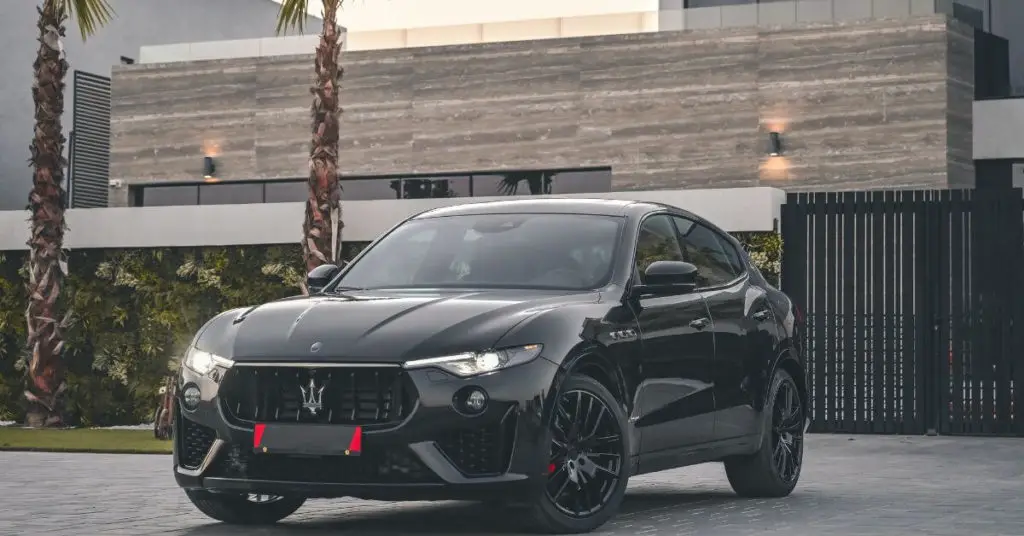
These vehicles have different pricing and positioning, but they all offer high performance, luxury, and versatility.
The new Ferrari Purosangue will try to stand out from its rivals by offering a unique V12 engine with exceptional power and sound.
It will also have advanced features such as Multimatic dampers that provide full body roll control, four-wheel steering, and four and rear-hinged power rear doors.
The Purosangue SUV will also have a distinctive design with more aerodynamic tricks than a Formula 1 car.
The Purosangue is Ferrari’s attempt to enter a lucrative segment while staying true to its DNA of making sports cars. It remains to be seen how well it will be received by customers and critics alike.
The Ferrari Purosangue’s main competitors are:
- Lamborghini Urus Performante: This is a high-performance version of the Urus SUV expected to debut in late 2022 or early 2023. It will have a twin-turbocharged V8 engine that delivers around 800 hp and 627 lb-ft of torque. It will also have improved aerodynamics, weight reduction, and chassis tuning.
- Bentley Bentayga Speed: This is the fastest version of the Bentayga SUV launched in 2020. It has a twin-turbocharged W12 engine that produces 626 hp and 664 lb-ft of torque. It can sprint from 0 to 62 mph in 3.9 seconds and reach a top speed of 190 mph. It has a sporty exterior design, carbon-ceramic brakes, and adaptive air suspension.
- The Aston Martin DBX: Luxury SUV launched in 2020 as the first SUV from the British brand and powered by a twin-turbocharged 4.0-liter V8 engine sourced from Mercedes-AMG, producing 542 hp and 516 lb-ft of torque. It can accelerate from 0 to 60 mph in 4.3 seconds and reach a top speed of 181 mph. It has an eight-speed automatic transmission and an all-wheel-drive system with active torque vectoring.
- Maserati Levante Trofeo: This is the most powerful version of the Levante SUV. It has a twin-turbocharged V8 engine generates 590 hp and 538 lb-ft of torque. It can accelerate from 0 to 62 mph in 4.1 seconds and reach a top speed of 187 mph. It also has a sporty exterior design, carbon-fiber accents, and Brembo brakes.
Target Audience for the Ferrari Purosangue:
Potential Ferrari Purosangue buyer profile based on location and hypothetical assumptions:
USA: The best customer for the Ferrari Purosangue in the US market may be a successful entrepreneur, executive, or celebrity who values performance, luxury, and exclusivity.
They may already own one or more Ferraris or other exotic cars, but they want an SUV that can offer more versatility and comfort for their family or business trips.
They may also enjoy driving on different terrains and exploring new places with their Purosangue. They may live in affluent areas such as California, Florida, or New York.
Canada: The best customer for the Ferrari Purosangue in the Canadian market may be a wealthy professional, investor, or sports star who appreciates quality, style, and innovation.
They may be passionate about Ferrari’s heritage and prestige but also want a versatile car or SUV that can handle Canada’s harsh weather and road conditions. They may also like to travel across the country or abroad with their Purosangue.
They may reside in prosperous cities such as Toronto, Vancouver, or Montreal.
China: The best customer for the Ferrari Purosangue in the Chinese market may be a young and influential entrepreneur, social media star, or entertainer who likes to stand out and impress others.
They may taste luxury and sophistication but also want an SUV to deliver power and excitement. They may also value rear-seat comfort and space for their guests or family.
They may live in cosmopolitan areas such as Beijing, Shanghai, or Shenzhen.
Europe: The best customer for the Ferrari Purosangue in the European market may be a refined and cultured connoisseur, collector, or enthusiast who loves Ferrari’s history and craftsmanship.
They may have a keen interest in performance and dynamics, but they also want an SUV that can offer elegance and practicality. They may also enjoy driving on scenic routes and visiting historical places with their Purosangue.
They may dwell in wealthy countries such as Germany, Switzerland, or Spain.
What is Ferrari Purosangue?
The Ferrari Purosangue is a four-door, four-seater car with a 715 hp V-12 engine, an eight-speed dual-clutch transmission, and an all-wheel-drive system. It is a modern GT that combines performance, luxury, and versatility.
Is Ferrari Purosangue an SUV?
Ferrari says the Purosangue is not an SUV but a new vehicle genre with a sleek and aerodynamic design. It also has a spacious cabin with various features and a generous cargo space.
How much does Ferrari Purosangue cost?
The Ferrari Purosangue costs around $375,000, making it one of the most expensive SUVs. It is for wealthy customers who have high expectations for quality and service.
When will Ferrari Purosangue be available?
The Ferrari Purosangue will be available in the first half of 2023. It will compete with other luxury SUVs such as the Lamborghini Urus Performante, Bentley Bentayga Speed,
What are the dimensions of Ferrari Purosangue?
The Ferrari Purosangue is 197.6 inches long, 79.9 inches wide, and 66.1 inches tall. It has a wheelbase of 118.1 inches and a ground clearance of 8.3 inches. It weighs 4,482 pounds.
What are the color options for Ferrari Purosangue?
Some examples are Rosso Corsa, Giallo Modena, Blu Tour de France, Nero Daytona, and Bianco Avus for the body and Nero, Cuoio, Beige Tradizione, Rosso Ferrari, and Blu Sterling for the interior.
Conclusion
In conclusion, the Ferrari Purosangue is a remarkable entry into the luxury SUV market.
Throughout this article, we have delved into the most crucial aspects of Purosangue, covering its performance, design, technology, pricing, competitors, and market positioning.
With its robust, naturally aspirated 6.5-liter V12 engine, the Purosangue delivers an impressive 715 horsepower and 528 pound-feet of torque, accelerating from 0 to 62 miles per hour in mere seconds.
The Purosangue’s unique combination of performance, style, and innovation sets it apart in the luxury SUV segment and caters to the preferences and expectations of its target audience.
In terms of appeal and value proposition, the Ferrari Purosangue stands out as a true testament to the Prancing Horse’s ability to create a luxurious SUV without compromising its iconic sporty DNA.
Its distinctive features and characteristics make it a compelling choice for potential buyers seeking an SUV that offers both performance and luxury while still bearing the prestigious Ferrari badge.
Overall, the Ferrari Purosangue is a thrilling and versatile addition to the luxury SUV market, capturing the essence of the brand’s legendary performance and design while meeting the demands of a growing market segment.
It is poised to significantly impact the industry and solidify Ferrari’s reputation for excellence in a new domain.
What are your thoughts on Ferrari’s decision to enter the SUV market with the Purosangue? Do you believe it will live up to the brand’s reputation for performance and luxury? Share your thoughts in the comments section below!

